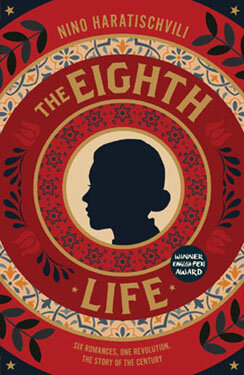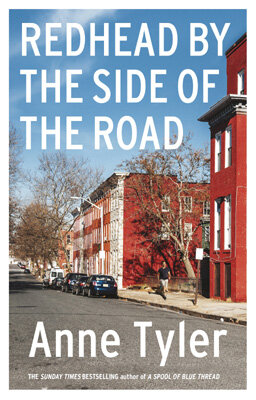Since Joyce Carol Oates frequently writes about social and political issues at the heart of American society her fiction can often feel eerily prescient. But it's an extraordinary coincidence that in the week preceding the publication of her latest novel NIGHT. SLEEP. DEATH. THE STARS. widely publicised real life events would so closely mirror the book's prologue. The opening describes an incident where a middle-aged white man driving on an upstate New York expressway notices a police confrontation on the side of the road. He observes white police officers using excessive force while detaining a young dark-skinned man and stops to question their actions. In response the officers restrain, beat and taser the driver. The injuries he sustains eventually lead to his death. The video of George Floyd, a 46 year old black man who died as a result of being brutally restrained by a white police officer in Minneapolis on May 25, 2020, has sparked widespread protests and newly motivated the Black Lives Matter movement. Public discussions regrading institutionalised racism, prejudice and privilege continue. These are also the pressing issues at the centre of Oates's epic new novel about a family whose lives unravel as a consequence of such a tragic event.
Of course, Oates's National Book Award-winning novel “them” depicts the events of 1967 in Detroit when the black community rose up to protest against the racist actions of the city's Police Department. History is repeating itself in a frightening way today as protests continue across the country, but a crucial difference is that the video footage of bystanders shows to the world how George Floyd's death was incontestably the result of police brutality. In Oates's new novel no such footage exists making the quest for justice painfully slow: “A lawsuit was like a quagmire, or rather was a quagmire: you might step into it of your own volition, but having stepped in, you lose your volition, you are drawn in, and down, and are trapped.” It's a timely reminder of how many cases of unjustified police violence such as this might never be proven and go unpunished. Oates also movingly details the long-term trauma survivors of such an attack experience wth the character of Azim Murthy, the driver the police initially stop.
The man who confronts the police at the beginning of the novel is John Earle McClaren, an upper class businessman and former mayor who is highly respected by the community. Following his hospitalisation, the narrative revolves around the perspectives of his immediate family members including his wife Jessalyn and their five adult children. John or “Whitey”, a nickname which persisted since his hair went prematurely white early in his life, was the strong-willed patriarchal figure who led his family. His abrupt demise leaves them at odds with each other and adrift in their own lives: “Without Whitey, a kind of fixture had slipped. A lynchpin. Things were veering out of control.” Though they are adults the children find themselves bickering over long-held grievances and rivalries because “No adult is anything but a kid, when a parent dies.”
At the same time, Jessalyn struggles to adjust to her new identity as a widow. Sections describing her deep grief are rendered with heartbreaking tenderness as she feels the persistence of her own life without her husband is a kind of absurdity: “of course you continue with the widow's ridiculous life, a Mobius strip that has no end.” Such expressions of the struggle to navigate the devastating wasteland of one's life after the loss of a longterm partner feel especially tender as there's comparable imagery and sentiments expressed in Oates's memoir “A Widow’s Story”. It takes time and patience for Jessalyn to understand that the story of her life can persist in the wake of this seismic loss and finally admit: “The widow wants to live, it is not enough to mourn.” It's exquisite and moving how Oates portrays the way Jessalyn continues to not only find new love but comes to understand that inevitable loss is a necessary part of love.
Jessalyn's children find it very challenging to adjust to the new demeanour of their mother and her new partner. Sophia, the youngest daughter of the family, states “If my mother changes into another person, the rest of us won't know who we are.” Their frequent monitoring of her life isn't only out of concern for her welfare but comes from an anxiety that their own identities will be destabilized as a result of her changing. The strange thing about families is that although they often give individuals a precious network of support through life, they can also inhibit freedom for personal growth as family members become accustomed to filling certain positions in relation to one another. Jessalyn herself observes of her children “They were all actors in a script who inhabited distinctive roles, that could not change.” The novel movingly charts the way these family members must learn to allow imaginative space for their siblings and parent to transform in accordance with newfound desires and needs.
Watch me discuss this novel with Joyce Carol Oates
Oates sympathetically portrays the challenges that the McClarerns encounter and the sacrifices they must make to grow into their new selves. For instance, one daughter has to dilute her professional aspirations in order to adhere to her moral beliefs about animal cruelty. Another son gradually allows himself to express the same-sex desire he feels towards another man despite believing his father would have been disappointed in him. Lorene, the stern middle-daughter, must learn to think of her coworkers as colleagues rather than dividing them into columns of allies or enemies. But one of the greatest struggles the three eldest children in the McClarern family wrestle with is their prejudice towards lower class and non-white individuals. Through their casual elitism and racism, Oates exposes how flimsy prejudice is as a state of mind and that prejudice most often comes from a place of wilful ignorance and misdirected anger. In this way the novel powerfully shows that it's not only the institutionalised racism found in certain sections of the American police force that needs to change, but also the hearts and minds of the country's citizens who categorize those who are different from them as others without even realising why they're doing it.
This review also appeared on Bearing Witness: Joyce Carol Oates Studies


























